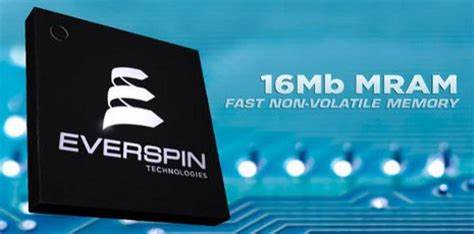the key players in the global MRAM market—Toshiba Corporation (Japan), NVE Corporation (US), Everspin Technologies Inc. (US), Avalanche Technology Inc. (US), Spin Memory, Inc. (US), Honeywell International Inc. (US), Samsung Electronics Co. Ltd (South Korea), Numem Inc. (US), and Taiwan Semiconductor Manufacturing Company Limited (Taiwan).
Market Highlights
The global MRAM market is projected to be valued at USD 1,396.7 million by the end of 2027, registering a CAGR of over 18.58% during the forecast period.
MRAM systems provide significant scope for growth and have high-speed writing and reading capabilities compared to SRAMs and DRAMs. Over the forecast period, the global MRAM market is projected to witness accelerated growth, as it has the potential to replace conventional flash memory drives and other Electrically Erasable Programmable Read-Only Memory (EEPROM). The introduction of a new product line for standalone and embedded memory drives is predicted to boost market growth, primarily due to their adoption in a growing number of applications in consumer electronics, enterprise, aerospace & defense, robotics, and industrial verticals.
Rapid urbanization and technological advancements in the semiconductor industry have fuelled the adoption of electronic devices, resulting in the expansion of the consumer electronics market. Wearables, portable electronics, and flexible devices are small, lightweight, hand-held devices with a stable memory that can easily be carried around. There are various wearable electronic devices which we use daily—smartphones and smartwatches being the most fundamental. There are other wearables and portable electronic devices that use MRAM memory, such as laptops, gaming consoles, media players, and navigation systems. Therefore, the increasing demand for consumer electronics drives the market demand for MRAM as these electronic devices require an essential component, i.e., memory in their circuits.
Moreover, the growing need for cloud computing to increase the operational efficiency of work processes has also raised the demand for MRAM in data centers.
COVID-19 Impact Analysis
COVID-19 has severely impacted and disrupted supply chain hubs across the globe. China, one of the major manufacturing hubs, has registered a decline of ~14% in the production capacity and a decline of ~40% in global electronic component shipments. COVID-19 has infected the Global Value Chain hub, wherein China played an important role in providing raw materials, assembly of products, and final dispatch. The significant decline in the export includes textile raw material, garments and clothing accessories, mechanical and electrical products, automatic data processing systems, central processing units, electrical equipment, and automobiles.
Segment Analysis
The global MRAM market has been classified on the basis of product, application, and region.
On the basis of product, the global MRAM market has been segmented into STT and Toggle. The STT segment accounted for the larger market share in 2020 and is estimated to register a CAGR of 19.35% during the review period. STT-MRAM (Spin-Transfer Torque) is an advanced MRAM that provides high density, low power consumption, and more cost-efficiency than Toggle MRAM, which also turns out to be the significant advantage of STT MRAM over Toggle MRAM.
By application, the MRAM market has been divided into aerospace & defense, automotive, robotics, consumer electronics, and enterprise storage. The use of MRAM in aerospace and defense, especially STT MRAM, has been subjected to its ability to be used in harsh environments.MRAM is mainly used in automotive applications as it captures data instantly in case of power loss, without the help of batteries or capacitors, and has the high endurance required for frequent writes over the product lifespan.
Key Findings of the Study:
-
- The global MRAM market is projected to reach a value of USD 1396.7millionby by 2027,with a CAGR of over18.58%during the forecast period from 2021 to 2027.
-
- North America accounted for the largest market share in 2020.This is due to advantages such as low power consumption and faster data rewrite, due to which it is used for several applications.
-
- Asia-Pacific is expected to be the second-fastest-growing regional market registering a CAGR of over 21.66%.
-
- Europe has registered high demand for MRAMs for being integrated with consumer electronic devices that require fast, non-volatile memory for smartphones and PC/laptops applications. The increased ownership of smartphones in the region over the last few years has led to the growth of the MRAM market.
-
- The introduction of new products and solutions for embedded and standalone memories and the use of MRAM in applications in the automotive and utilities industries create lucrative opportunities for the players in this market.
- Global 5G Chipset Market to Surge at 27.2% CAGR, which is anticipated to reach USD 78.5 billion by 2030

